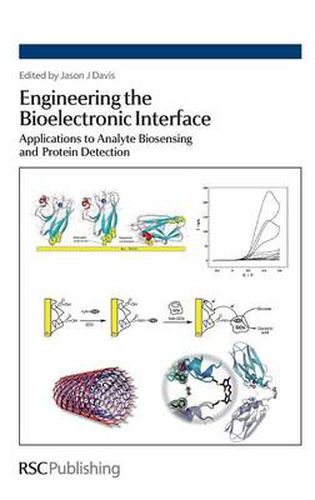Readings Newsletter
Become a Readings Member to make your shopping experience even easier.
Sign in or sign up for free!
You’re not far away from qualifying for FREE standard shipping within Australia
You’ve qualified for FREE standard shipping within Australia
The cart is loading…






The interfacing of man-made electronics with redox proteins and enzymes not only tells us a great deal about the levels of sophistication active in biology, but also paves the way to using it in derived sensory devices. Some of these have already had a profound impact on both clinical diagnostics and the quality of life enjoyed by those unfortunate enough to live with disease. Though much remains to be learnt about controlling and optimising these interfacial interactions, their potential uses are, if anything, growing. Written by leaders in the field, this is the only book to focus on the generation of biosensing interfaces with analyses and control at the molecular level. Some of these are enzyme based, others associated with the generation of surfaces for protein-protein recognition. Summaries of state-of-the-art investigations into the interfacing of structurally complex molecular species with electrode surfaces are included along with their design, analysis and potential application. Studies into the wiring of biomolecules to man-made surfaces through the use of delocalised molecular wires or carbon nanotubes are detailed as are the application of surface chemical and genetic engineering methods to the construction of robust, orientated biomolecular monolayers.
$9.00 standard shipping within Australia
FREE standard shipping within Australia for orders over $100.00
Express & International shipping calculated at checkout
The interfacing of man-made electronics with redox proteins and enzymes not only tells us a great deal about the levels of sophistication active in biology, but also paves the way to using it in derived sensory devices. Some of these have already had a profound impact on both clinical diagnostics and the quality of life enjoyed by those unfortunate enough to live with disease. Though much remains to be learnt about controlling and optimising these interfacial interactions, their potential uses are, if anything, growing. Written by leaders in the field, this is the only book to focus on the generation of biosensing interfaces with analyses and control at the molecular level. Some of these are enzyme based, others associated with the generation of surfaces for protein-protein recognition. Summaries of state-of-the-art investigations into the interfacing of structurally complex molecular species with electrode surfaces are included along with their design, analysis and potential application. Studies into the wiring of biomolecules to man-made surfaces through the use of delocalised molecular wires or carbon nanotubes are detailed as are the application of surface chemical and genetic engineering methods to the construction of robust, orientated biomolecular monolayers.